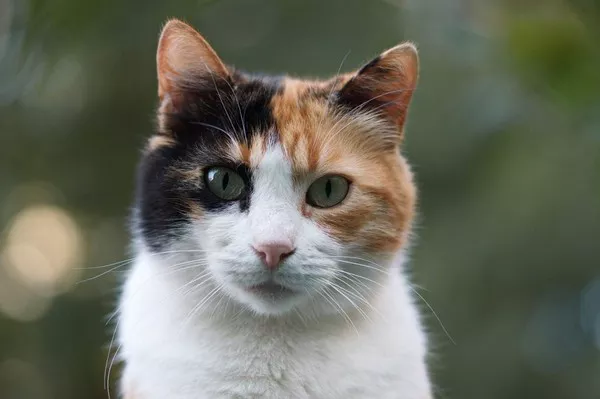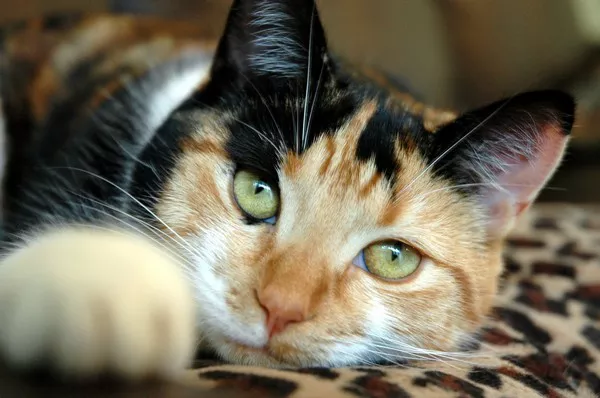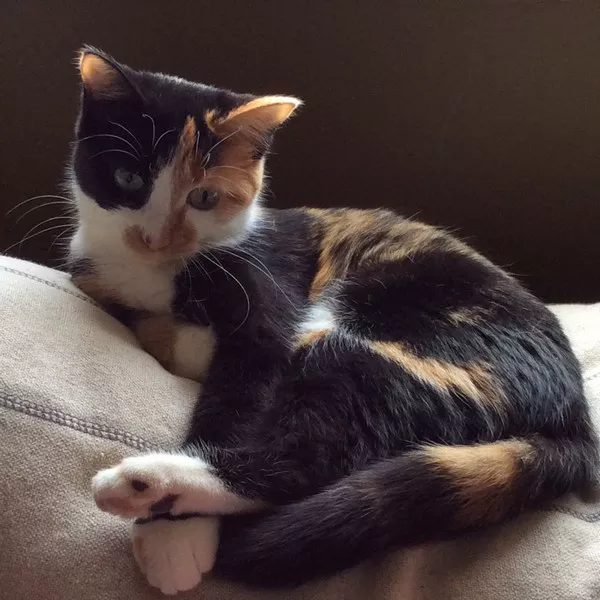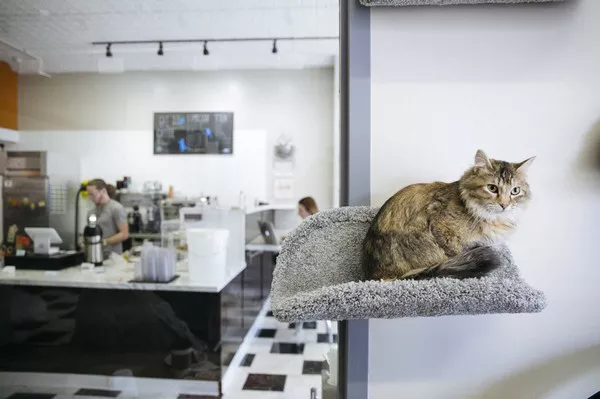Calico cats, renowned for their striking tricolor coats, captivate the hearts of cat enthusiasts worldwide. However, like any living beings, calico cats may face health challenges, one of which is a condition known as nystagmus. Nystagmus refers to involuntary and repetitive eye movements that can be observed in both humans and animals. In this article, we delve into the intriguing world of nystagmus in calico cats, exploring the potential causes, symptoms, and the care required for these unique feline companions.
Understanding Nystagmus
Defining Nystagmus:
1. Involuntary Eye Movements: Nystagmus is characterized by rhythmic, involuntary movements of the eyes. These movements can be horizontal, vertical, or even circular, and they may occur intermittently or persistently.
2. Variability in Severity: The severity of nystagmus can vary among individuals, ranging from subtle and occasional movements to more pronounced and continuous eye motion.
Types of Nystagmus:
1. Congenital Nystagmus: Some individuals may have nystagmus from birth, known as congenital nystagmus. This type is often associated with neurological factors and may be present throughout the individual’s life.
2. Acquired Nystagmus: Nystagmus can also develop later in life, known as acquired nystagmus. This type may be linked to various underlying health conditions or environmental factors.
Potential Causes of Nystagmus in Calico Cats
Genetic Factors:
1. Inherited Conditions: Calico cats, like other breeds, may carry genetic predispositions to certain health conditions. Some congenital forms of nystagmus can be linked to inherited factors, potentially passed down through generations.
2. Genetic Diversity: The intricate genetics behind the calico coat pattern may contribute to a range of genetic factors, including those influencing eye health. Understanding the genetic diversity within the calico population is crucial in exploring potential links to nystagmus.
Neurological Issues:
1. Brain Abnormalities: Nystagmus can be a result of neurological abnormalities affecting the brain’s control over eye movements. In calico cats, certain genetic conditions or developmental issues may contribute to neurological challenges, leading to nystagmus.
2. Inflammatory Conditions: Inflammatory conditions affecting the nervous system, such as encephalitis, may also result in nystagmus. Identifying and addressing the underlying cause is essential for effective management.
Eye Abnormalities:
1. Vision Impairment: Nystagmus can occur as a response to vision impairment or abnormalities. Calico cats, like any other cats, may experience eye conditions that affect their vision, triggering nystagmus as a compensatory mechanism.
2. Congenital Eye Disorders: Some congenital eye disorders may be more prevalent in certain breeds, including calico cats. These disorders can lead to visual challenges, potentially contributing to the development of nystagmus.
Environmental Factors:
1. Exposure to Toxins: Calico cats, like all cats, can be exposed to environmental toxins that may impact their health. Ingesting or coming into contact with certain substances can lead to neurological issues, potentially manifesting as nystagmus.
2. Trauma or Injury: Physical trauma or injury to the head or eyes can result in nystagmus. Understanding the cat’s history and potential exposure to traumatic events is crucial in identifying the cause.
Symptoms and Observations
Observable Signs:
1. Eye Movements: The most noticeable symptom of nystagmus is the rhythmic movement of the eyes. Observing the pattern and direction of these movements can provide valuable information for veterinary evaluation.
2. Head Tilt or Turn: Cats with nystagmus may exhibit a head tilt or turn as they attempt to stabilize their vision. This compensatory behavior helps them adjust to the involuntary eye movements.
3. Behavioral Changes: Some cats may display changes in behavior, such as reluctance to engage in certain activities or a preference for staying in dimly lit environments. These behavioral changes can be indicative of visual challenges associated with nystagmus.
Veterinary Evaluation:
1. Comprehensive Examination: If a calico cat exhibits signs of nystagmus, a prompt veterinary evaluation is essential. The veterinarian will conduct a comprehensive examination, including a detailed medical history, neurological assessments, and ophthalmic evaluations.
2. Diagnostic Tests: Diagnostic tests, such as bloodwork, imaging studies, and specialized eye examinations, may be conducted to identify the underlying cause of nystagmus. These tests help rule out potential genetic, neurological, or environmental factors contributing to the condition.
Care and Management of Calico Cats with Nystagmus
Individualized Treatment Plans:
1. Addressing Underlying Causes: Treatment plans for calico cats with nystagmus depend on the underlying causes identified through veterinary evaluations. Addressing the root cause is crucial for effective management and improvement of the cat’s overall well-being.
2. Medication and Therapies: In cases where nystagmus is associated with specific conditions, such as inflammation or infection, medications and therapies may be prescribed to alleviate symptoms and manage the underlying issue.
Environmental Considerations:
1. Adaptations at Home: Calico cats with nystagmus may benefit from environmental adaptations at home. Providing a stable and comfortable environment, minimizing changes in the layout of the living space, and ensuring easy access to food, water, and litter boxes can enhance the cat’s quality of life.
2. Regular Veterinary Check-ups: Regular veterinary check-ups are essential for monitoring the cat’s health and addressing any changes in symptoms. Adjustments to the care plan may be made based on the cat’s response to treatment and ongoing evaluations.
Nutritional Support:
1. Balanced Diet: Maintaining a balanced and nutritionally complete diet is crucial for the overall health of calico cats with nystagmus. Consultation with a veterinarian can help determine the most suitable dietary plan based on the cat’s specific health needs.
2. Supplements: In some cases, veterinarians may recommend supplements to support eye health and overall well-being. Omega-3 fatty acids and antioxidants are examples of supplements that may be beneficial for cats with certain eye conditions.
Educating Cat Owners about Nystagmus in Calico Cats
Dispelling Myths:
1. Genetic Diversity: Educating cat owners about the genetic diversity within the calico population is essential in dispelling myths and misconceptions related to nystagmus. Understanding that calico cats can have a range of health conditions, including those affecting the eyes, promotes informed and compassionate care.
2. Early Detection: Encouraging cat owners to seek veterinary attention at the first signs of nystagmus or other concerning symptoms is crucial for early detection and intervention. Early diagnosis allows for timely management and improves the likelihood of positive outcomes.
Promoting Regular Veterinary Visits:
1. Comprehensive Eye Examinations: Regular veterinary visits that include comprehensive eye examinations play a vital role in monitoring the eye health of calico cats. Early detection of eye conditions allows for proactive measures to address potential issues.
2. Open Communication: Fostering open communication between cat owners and veterinarians facilitates a collaborative approach to the care and well-being of calico cats. Cat owners should feel comfortable discussing any observed changes in behavior or health with their veterinary team.
Conclusion
Nystagmus in calico cats adds a layer of complexity to the diverse world of these enchanting feline companions. As cat enthusiasts and caregivers, understanding the potential causes, symptoms, and management strategies for nystagmus empowers us to provide the best possible care for our beloved calico cats. Through early detection, veterinary guidance, and compassionate support, we can enhance the quality of life for calico cats facing the challenges associated with nystagmus, celebrating their unique beauty and resilient spirits.



























